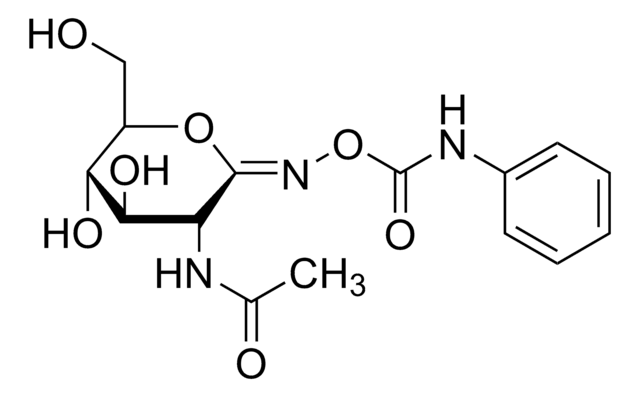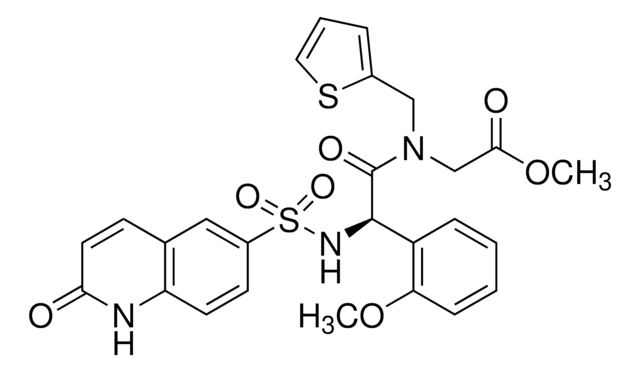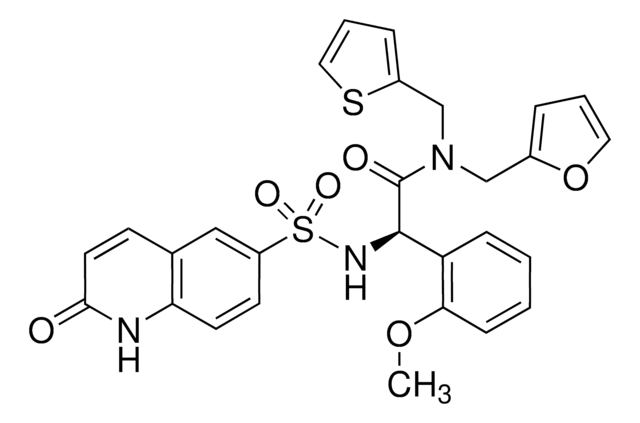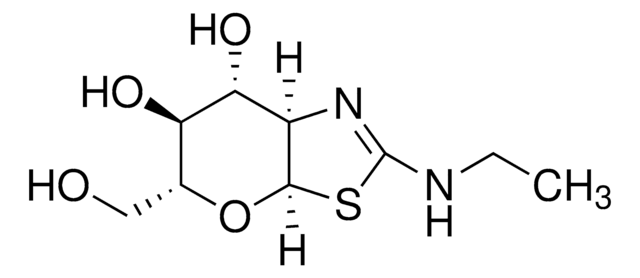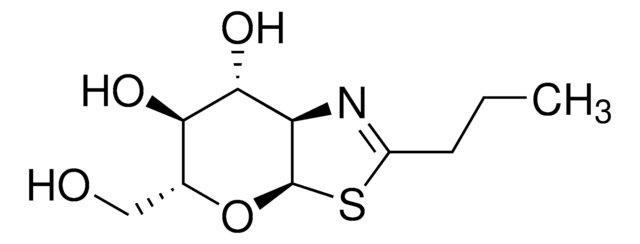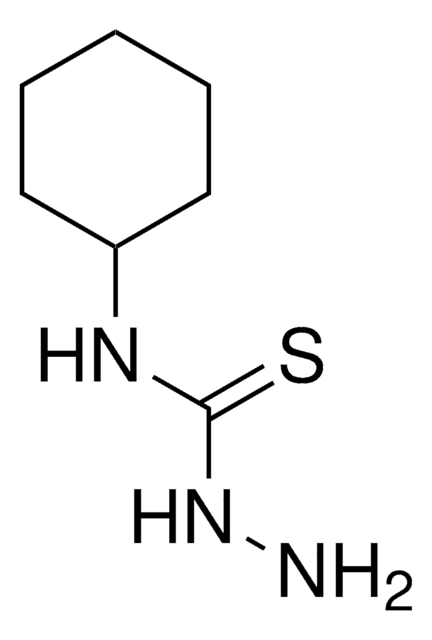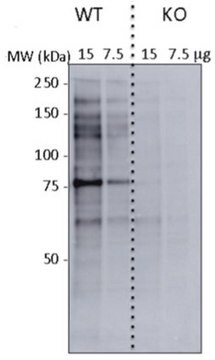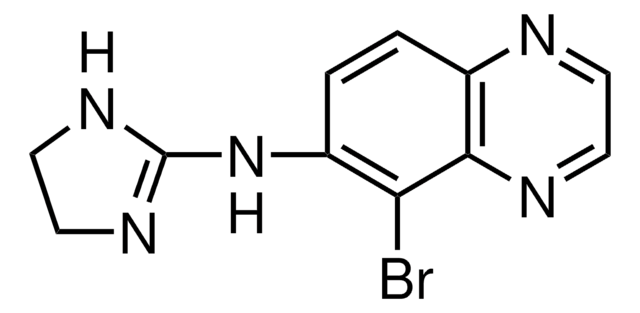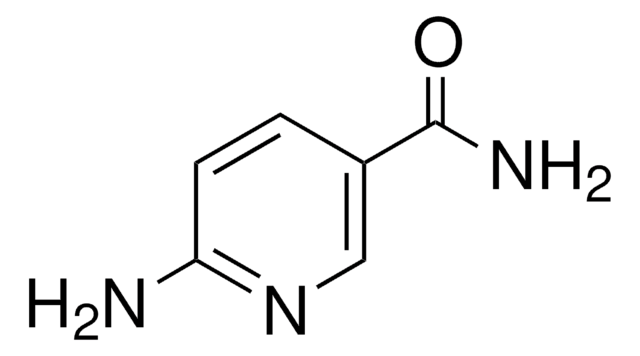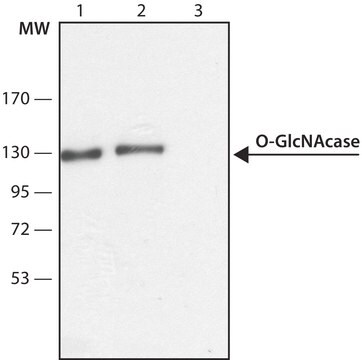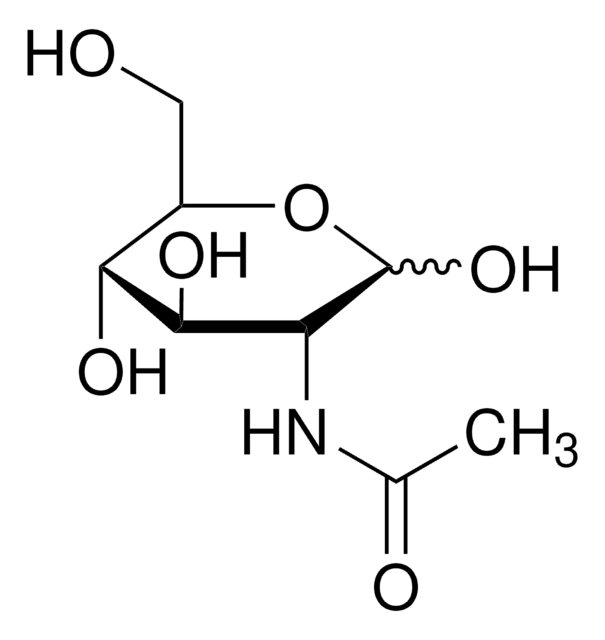SML0244
Thiamet G
≥98% (HPLC)
Sinonimo/i:
(3aR,5R,6S,7R,7aR)-2-(ethylamino)-3a,6,7,7a-tetrahydro-5-(hydroxymethyl)-5H-Pyrano[3,2-d]thiazole-6,7-diol
About This Item
Prodotti consigliati
Livello qualitativo
Saggio
≥98% (HPLC)
Stato
powder
Attività ottica
[α]/D -21 to -26°, c = 0.3 in methanol
Condizioni di stoccaggio
desiccated
Colore
white to beige
Solubilità
H2O: ≥5 mg/mL at warmed to 60 °C
Temperatura di conservazione
−20°C
Stringa SMILE
CCNC1=N[C@@H]2[C@@H](O)[C@H](O)[C@@H](CO)O[C@@H]2S1
InChI
1S/C9H16N2O4S/c1-2-10-9-11-5-7(14)6(13)4(3-12)15-8(5)16-9/h4-8,12-14H,2-3H2,1H3,(H,10,11)/t4-,5-,6-,7-,8-/m1/s1
PPAIMZHKIXDJRN-FMDGEEDCSA-N
Cerchi prodotti simili? Visita Guida al confronto tra prodotti
Applicazioni
- to treat human embryonic kidney 293 cells in order to study its effect on Wnt/beta-catenin signalling
- to treat lytically-replicating producer
- to incubate mice (C57BL/6) aortic segments to increase global O-GlcNAc levels
Azioni biochim/fisiol
Avvertenze
Warning
Indicazioni di pericolo
Consigli di prudenza
Classi di pericolo
Skin Sens. 1B
Codice della classe di stoccaggio
11 - Combustible Solids
Classe di pericolosità dell'acqua (WGK)
WGK 3
Punto d’infiammabilità (°F)
Not applicable
Punto d’infiammabilità (°C)
Not applicable
Scegli una delle versioni più recenti:
Possiedi già questo prodotto?
I documenti relativi ai prodotti acquistati recentemente sono disponibili nell’Archivio dei documenti.
I clienti hanno visto anche
Il team dei nostri ricercatori vanta grande esperienza in tutte le aree della ricerca quali Life Science, scienza dei materiali, sintesi chimica, cromatografia, discipline analitiche, ecc..
Contatta l'Assistenza Tecnica.